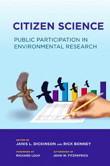ESSENTIALS
AROUND CAMPUSGates Hall: First look
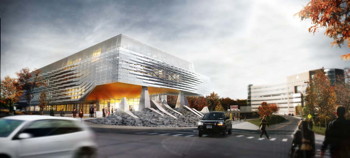
Rendering of exterior view of Bill & Melinda Gates Hall See larger image
With the architect's work completed, construction on Bill & Melinda Gates Hall, the new home of Computing and Information Science, is expected to begin in early sping, according to Dan Huttenlocher, dean of CIS. Construction will be accelerated to finish the building by December 2013 so that the information science department, currently housed off campus, can move in by January 2014. The new building, to rise on the site of the Hoy Field parking lot, will for the first time bring two CIS departments – computer science and information science – together under one roof.
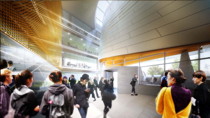
Interior view See larger image
The Bill & Melinda Gates Foundation gave the university $25 million in January 2006 to support the building. An additional $15.3M was raised during a successful fundraising campaign that concluded in late 2010, which will allow completion of the $60 million project without incurring any external debt.
Thom Mayne, winner of the 2005 Pritzker Prize in architecture, is the lead architect.
More than one-third of the building will be composed of research and teaching labs, including specialized labs for cybersecurity, human-computer interaction, computational sustainability, robotics, computer vision and other research areas.
Grin and bear it
The Big Red Bear's head, detached from its body, wore a bemused expression on the carpeted floor of the Marriott Washington Wardman Park hotel. Actually, there was no body – just the empty suit of the costume laid flat. Cindy Marinaro '12, who would be wearing the costume later that afternoon, was measuring it.

Big Red Bear in front of Hot Truck mockup at Cornell Alumni Leadership Conference in Washington, D.C See larger image
Marinaro, president of The Big Red Bears, is one of about a dozen students who share the role of Touchdown, the Big Red Bear, Cornell's unofficial mascot. She was in D.C. on Jan. 28 to be the bear at the Cornell Alumni Leadership Conference.
Terry Warren '52, J.D. '56, co-chair of his class's reunion committee, had a special request for Marinaro: At his class's 60th reunion in June, he wants the bear to play a big part in the festivities – decked out in a railroad conductor costume.
The Class of 1952's Reunion theme is "All Aboard for Cornell," recaling the days Warren and his classmates took the Lehigh Valley Railroad to campus.
Warren plans to have a costume design shop outfit the bear in train engineer's overalls, a railroading cap and red bandana.
This was the first request for a special outfit for the bear, Marinaro said, noting that for a T-shirt, the bear's size is XXXL.
The train theme is close to Warren's heart. He met his wife (and class reunion co-chair), Dorothea Warren '52, on the train at the end of a Thanksgiving break as they returned to Cornell from Penn Station.
Barrett Keene is walking across America
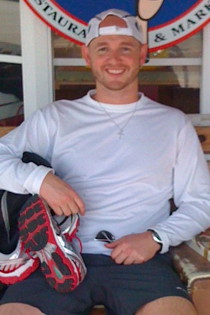
Barrett Keene, Ph.D. '13 See larger image
On Jan. 28, equipped only with a backpack, laptop, cellphone and a few energy bars, Barrett Keene, Ph.D. '13, started walking north from Miami on what is expected to be an eight-month, 3,475-mile trek to San Francisco.
A doctoral student in the field of education, Keene started the "Go Walk America" project to raise funds and awareness for orphaned and abandoned children worldwide and to conduct education leadership research in schools along his route.
"I wanted to try to do something while I had a little flexibility being a Ph.D. student," said Keene, who was inspired by and is partnering with the Kansas City nonprofit The Global Orphan Project for his two-pronged initiative.
With the grueling physical challenge looming and still without a support vehicle, "I'm a little nervous," Keene admitted. "I'd be lying if I said I wasn't." He writes about his adventures on his blog, gowalkamerica.org.
"I am excited about this…. [There] are small things we can do that can literally change the trajectory of the lives of a lot of kids," said Keene. "So whatever my eight months look like, it's going to be worth it."
'The Life Before Us' is reading project pick
The required summer reading for new students entering Cornell in the fall will be Romain Gary's novel "The Life Before Us," the story of an illiterate Arab boy and the Holocaust survivor who raised him, Vice Provost for Undergraduate Education Laura Brown announced.
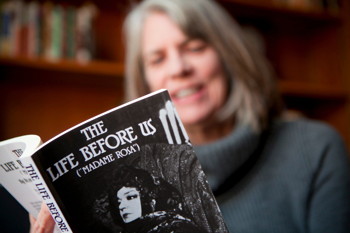
Laura Brown with "The Life Before Us" by Romain Gary See larger image
During orientation in August, the New Student Reading Project will organize six presentations to explore topics, disciplines, programs and concepts related to the novel's themes. Students, faculty and staff also will discuss the book in small group seminars.
Published in Paris in 1975, "The Life Before Us" follows the relationship between the boy, Momo, and Madame Rosa – a Jewish ex-prostitute who survived Auschwitz – and the last months of their life together in the Parisian immigrant slum of Belleville. Madame Rosa makes a living by raising the children of prostitutes, and as her health declines Momo must find ways to provide for them all.
"The Life Before Us" is admired for its invention of a new literary language, an informal representation of direct speech that gives immediate access to experiences that escape description, and to an extraordinary emotional intimacy, Brown said.
For a study guide and additional resources, visit reading.cornell.edu.
Channeling citizen science
Already a nationwide leader in citizen science, Cornell is also the source of a book for this developing field. "Citizen Science: Public Participation in Environmental Research" (Cornell University Press) is edited by Janis Dickinson, professor of natural resources and director of citizen science at the Cornell Lab of Ornithology, and Rick Bonney, director of program development and evaluation at the lab and co-founder of Cornell's Citizen Science program.
Citizen science enlists members of the public to make and record observations, such as counting birds in their backyards, watching for the first budding leaf in spring or measuring snowfall. The large numbers of volunteers who participate in projects such as Project FeederWatch or Project BudBurst collect valuable research data that create an enormous body of scientific data.
The book addresses how to conduct citizen science projects as well as the nuances of creating a robust digital infrastructure and recruiting a large participant base. An overview of the types of research approaches and techniques demonstrates how large data sets arising from citizen science projects are used by experts.
Oscar nods
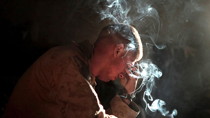
Scene from Danfung Dennis' film "Hell and Back Again" See larger image
The Sundance Film Festival winner "Hell and Back Again" was nominated for a best documentary feature Oscar.
The story of an American soldier's rocky return to civilian life after service in Afghanistan was directed by photojournalist-turned-filmmaker Danfung Dennis '05. The film is set to air on the PBS series "Independent Lens" in May.
Also nominated was Thelma Schoonmaker '61, Martin Scorsese's longtime film editor, for "Hugo."
